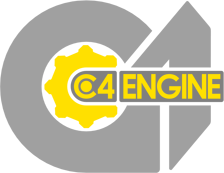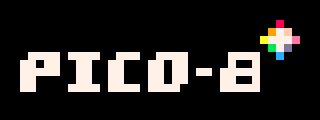 W
WThe 4A Engine is a graphics middleware engine developed by 4A Games for use in their video game Metro 2033, published by THQ. It supports Direct3D APIs 9, 10, 11, and recently 12, OpenGL 3.2, along with NVidia's PhysX, and also NVidia's 3D Vision.
 W
WCarmageddon: Reincarnation is a vehicular combat game, the fourth in the Carmageddon series. The game was developed by Stainless Games.
 W
WThe Blender Game Engine is a discontinued component of Blender, a free and open-source 3D production suite, used for making real-time interactive content. The game engine was written from scratch in C++ as a mostly independent component, and includes support for features such as Python scripting and OpenAL 3D sound.
 W
WBuild is a first-person shooter engine created by Ken Silverman, author of Ken's Labyrinth, for 3D Realms. Like the Doom engine, the Build engine represents its world on a two-dimensional grid using closed 2D shapes called sectors, and uses simple flat objects called sprites to populate the world geometry with objects.
 W
WThe C4 Engine is a proprietary computer game engine developed by Terathon Software that is used to create 3D games and other types of interactive virtual simulations for PlayStation 5, PlayStation 4, PlayStation 3, Windows, Mac OS X, Linux, and iOS.
 W
WThe Cafu Engine is a game engine developed by Carsten Fuchs. It is portable across platforms and runs on Windows and Linux, with plans to be adapted to OS X. The engine's source code is freely available under the MIT Licence.
 W
WParadox Development Studio is a Swedish video game developer founded in 1995. It is closely associated with its parent company and video game publisher, Paradox Interactive. It is best known for its grand strategy wargame series Europa Universalis, Hearts of Iron, Victoria, Crusader Kings, Imperator, and Stellaris.
 W
WCryEngine is a game engine designed by the German game developer Crytek. It has been used in all of their titles with the initial version being used in Far Cry, and continues to be updated to support new consoles and hardware for their games. It has also been used for many third-party games under Crytek's licensing scheme, including Sniper: Ghost Warrior 2 and SNOW. Warhorse Studios uses a modified version of the engine for their medieval RPG Kingdom Come: Deliverance. Ubisoft maintains an in-house, heavily modified version of CryEngine from the original Far Cry called the Dunia Engine, which is used in their later iterations of the Far Cry series.
 W
WCrystal Space is a framework for developing 3D applications written in C++ by Jorrit Tyberghein and others. The first public release was on August 26, 1997. It is typically used as a game engine but the framework is more general and can be used for any kind of 3D visualization. It is very portable and runs on Microsoft Windows, Linux, UNIX, and Mac OS X. It is also free and open-source software, licensed under the GNU LGPL-2.0-or-later, and was SourceForge.net's Project of the Month for February 2003.
 W
WCube 2: Sauerbraten is a cross-platform, Quake-like first-person shooter that runs on Microsoft Windows, Linux, FreeBSD, OpenBSD, and Mac OS X using OpenGL and SDL. The game features single-player and multiplayer gameplay and contains an in-game level editor. The game engine is free and open-source software, under the zlib License, with commercial support available from the developer's business counterpart, Dot3 Labs. The game media is released under various non-free licenses. The aim of the project is not to produce the most features and highest-quality graphics possible, but rather to allow map-editing to be done in real-time within the game, while keeping the engine source code small and elegant.
 W
WDelta3d is an open source software gaming/simulation engine API. Delta3d is managed and supported by Caper Holdings LLC. Previously the Modeling, Virtual Environments, and Simulation (MOVES) Institute at the Naval Postgraduate School in Monterey, California managed and supported delta3d.[1] Alion Science has also been a major contributor to enhancements and features.
 W
Wid Tech 4, popularly known as the Doom 3 engine, is a game engine developed by id Software and first used in the video game Doom 3. The engine was designed by John Carmack, who also created previous game engines, such as those for Doom and Quake, which are widely recognized as significant advances in the field. This OpenGL-based game engine has also been used in Quake 4, Prey, Enemy Territory: Quake Wars, Wolfenstein, and Brink. id Tech 4 is licensed under the terms of the GNU General Public License v3.0 or later.
 W
WDim3, also known as Dimension 3, is a free and open-source 3D game engine created by Brian Barnes. It has been chosen as a staff pick for OS X development software by Apple. and featured as one of their "hot game building tools." dim3 has an entry in DevMaster's 3D engines database.
 W
WParadox Development Studio is a Swedish video game developer founded in 1995. It is closely associated with its parent company and video game publisher, Paradox Interactive. It is best known for its grand strategy wargame series Europa Universalis, Hearts of Iron, Victoria, Crusader Kings, Imperator, and Stellaris.
 W
WGDevelop is a 2D cross-platform, free and open-source game engine, which mainly focuses on creating PC and Mobile games, as well as HTML5 games playable in the browser. Created by Florian Rival, who is a software engineer at Google, GDevelop is mainly aimed at non-programmers and game developers of all skillsets, employing event based visual programming similar to such engines as Construct, Stencyl, and Tynker.
 W
WGodot (/ˈɡɒdoʊ/) is a cross-platform, free and open-source game engine released under the MIT license. It was initially developed by Argentine software developers Juan Linietsky and Ariel Manzur for several companies in Latin America prior to its public release. The development environment runs on multiple operating systems including Linux, BSDs, macOS, and Microsoft Windows. It is designed to create both 2D and 3D games targeting PC, mobile, and web platforms.
 W
WGoldSrc is a proprietary game engine developed by Valve. At its core, GoldSrc is a heavily modified version of id Software's Quake engine. It originally made its debut in 1998 with Half-Life, and would power future games developed by or with oversight from Valve, including Half-Life's expansions, Day of Defeat, and multiple games in the Counter-Strike series.
 W
WHorde3D is an open-source cross-platform graphics engine. Its purpose and design is similar to that of OGRE with the primary goal being lightweight for next-generation video games. The engine is also particularly suited for large crowd simulations. The engine is also compatible with GLFW. The major part of the graphics engine was originally written for the indie group pyropix and development is now continued at the University of Augsburg.
 W
Wid Tech is a series of separate game engines designed and developed by id Software. Prior to the presentation of the id Tech 5-based game Rage in 2011, the engines lacked official designation and as such were simply referred to as the Doom and Quake engines, from the name of the main game series the engines had been developed for. "id Tech" has been released as free software under the GNU General Public License. id Tech versions 0 to 3 were released under GPL-2.0-or-later. id Tech versions 3.5 to 4.5 were released under GPL-3.0-or-later. id Tech 5 to 7 are proprietary, with id Tech 7 currently being the latest utilized engine.
 W
Wid Tech 3, popularly known as the Quake III Arena engine, is a game engine developed by id Software for their video game Quake III Arena. It has been adopted by numerous games. During its time, it competed with the Unreal Engine; both engines were widely licensed.
 W
Wid Tech 4, popularly known as the Doom 3 engine, is a game engine developed by id Software and first used in the video game Doom 3. The engine was designed by John Carmack, who also created previous game engines, such as those for Doom and Quake, which are widely recognized as significant advances in the field. This OpenGL-based game engine has also been used in Quake 4, Prey, Enemy Territory: Quake Wars, Wolfenstein, and Brink. id Tech 4 is licensed under the terms of the GNU General Public License v3.0 or later.
 W
Wid Tech 4, popularly known as the Doom 3 engine, is a game engine developed by id Software and first used in the video game Doom 3. The engine was designed by John Carmack, who also created previous game engines, such as those for Doom and Quake, which are widely recognized as significant advances in the field. This OpenGL-based game engine has also been used in Quake 4, Prey, Enemy Territory: Quake Wars, Wolfenstein, and Brink. id Tech 4 is licensed under the terms of the GNU General Public License v3.0 or later.
 W
Wid Tech 3, popularly known as the Quake III Arena engine, is a game engine developed by id Software for their video game Quake III Arena. It has been adopted by numerous games. During its time, it competed with the Unreal Engine; both engines were widely licensed.
 W
WLeadwerks is a cross-platform game engine developed by Leadwerks Software that focuses on ease of use and learning. The software supports Windows and Linux, with OS X support in development. Leadwerks is currently on its fourth major version and is sold through the Steam digital distribution platform.
LithTech is a game engine developed by Monolith Productions and comparable with the Quake and Unreal engines. Monolith and a number of other video game developers have used LithTech as the basis for their first-person shooter games.
 W
WThe Official Hamster Republic Role Playing Game Construction Engine, abbreviated as OHRRPGCE or OHR, is an open-source, "All-in-one" game creation system. It was designed to allow the quick creation of 2D role-playing video games (RPGs). It was originally written by James Paige in QuickBASIC and released in late 1997 or early 1998. In May 2005, the source code was released as free software under the GNU GPL-2.0-or-later, and it was soon ported from QuickBASIC to FreeBASIC and to modern operating systems.
 W
WOpenMW is an free and open-source game engine recreation that reimplements the one powering Bethesda Softworks' 2002 open-world role-playing game The Elder Scrolls III: Morrowind.
 W
WPICO-8 is a virtual machine and game engine created by Lexaloffle Games. It is a "fantasy video game console" that mimics the limited graphical and sound capabilities of 8-bit systems of the 1980s. The goal of this is to spur one's creativity and ingenuity in producing games, and avoid being overwhelmed with the many possibilities of modern tools and machines. Such a design also allows PICO-8 games to have a familiar look and feel.
 W
WQfusion is a 3D game engine. The project was started by Victor Luchitz along with several others. It is written in C for use on Windows and Unix-based systems. The engine also supports the data of Quake III as maps, 3D models and shaders.
 W
WThe Quake II engine is a game engine developed by id Software for use in their 1997 first-person shooter Quake II. It is the successor to the Quake engine. Since its release, the Quake II engine has been licensed for use in several other games.
 W
WThe Spring Engine, is a game engine for real-time strategy (RTS) video games. The game engine is free and open-source software, subject to the terms of the GNU General Public License v2.0 or later.
 W
WStencyl is a video game development tool that allows users to create 2D video games for computers, mobile devices, and the web. The software is available for free, with select publishing options available for purchase. The software was originally called "StencylWorks" while in development and for the initial release but was later shortened to just "Stencyl".
 W
WUnity is a cross-platform game engine developed by Unity Technologies, first announced and released in June 2005 at Apple Inc.'s Worldwide Developers Conference as a Mac OS X-exclusive game engine. The engine has since been gradually extended to support a variety of desktop, mobile, console and virtual reality platforms. It is particularly popular for iOS and Android mobile game development and used for games such as Pokémon Go, Monument Valley, Call of Duty: Mobile, Beat Saber and Cuphead. It is considered easy to use for beginner developers and is popular for indie game development.
 W
WUnreal Engine is a game engine developed by Epic Games, first showcased in the 1998 first-person shooter game Unreal. Initially developed for PC first-person shooters, it has since been used in a variety of genres of three-dimensional (3D) games and has seen adoption by other industries, most notably the film and television industry. Written in C++, the Unreal Engine features a high degree of portability, supporting a wide range of desktop, mobile, console and virtual reality platforms.